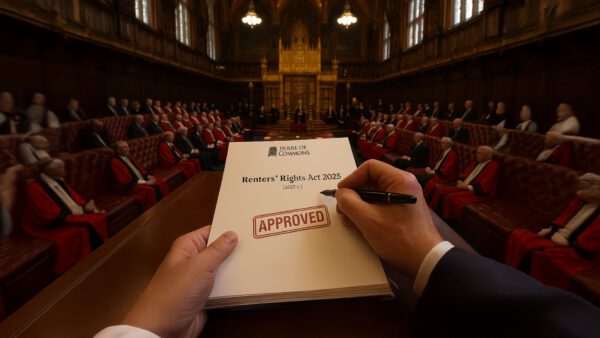What is Long Residence?
If you have lived continuously and legally in the UK for 10 years, you may qualify for Indefinite Leave to Remain (ILR) through the long residence route. Lawful residence means you have not overstayed your visa at any point during your stay in the UK.
A key feature of the long residence route is that it does not matter what type of visa you held during your 10+ years in the UK. Unlike other ILR pathways that require specific visas for 2, 3, or 5 years (and exclude some visas like the Intra-company transfer visa), the long residence route counts any visa type. This is beneficial for those who have held various visas and haven’t met the qualification period for any single visa type. In other pathways, switching visas often resets the ILR clock, but for long residence, all continuous time in the UK counts.
Long Residence Requirements 2024
To qualify for long residence under the 10-year rule, you must meet the following requirements:
- Continuous Lawful Residence: You must have resided lawfully and continuously in the UK for at least 10 years without gaps, including time on most immigration categories or a combination of categories.
- Absence Limits: From 11 April 2024, you must not have been outside the UK for more than 180 days in any 12-month period.
- English Language Requirements: Meet the English language requirements.
- Life in the UK Test: Pass the knowledge of life in the UK test.
- Current Visa: Hold your current visa for at least one year.
Additionally, you must meet suitability criteria, including:
- No Grounds for Refusal: You must not have any grounds for refusal, such as criminal convictions or posing a threat to immigration control. Granting ILR must not be against the public interest.
- No Immigration Breaches: You must not have breached previous immigration conditions (e.g., overstaying).
If unsure about your qualification for ILR through long residence, contact Jayesh Jethwa for assistance and application preparation.
Continuous 10 Years Lawful Residence
Continuous lawful residence means spending at least 10 years in the UK with limited leave granted by the Home Office. The Home Office will check your absences from the UK (referred to as “breaks in continuous residence”). Key updates for the long residence ILR absence rule in 2024 include:
- Absences Before 11 April 2024: Any single absence must not exceed 184 days.
- Absences Before 11 April 2024: Total absences must not exceed 548 days. For periods extending beyond 11 April 2024, there is no 548-day limit.
- Absences After 11 April 2024: No absences should exceed 180 days in any 12-month period.
The following do not count towards continuous residence:
- Time on a Standard Visitor visa or as a visitor without a visa.
- Time on a Short-term study visa.
- Time on a Seasonal Worker visa.
- Time on immigration bail, temporary admission, or temporary release.
- Time in prison, a young offender institution, or secure hospital.
- Time overstaying your visa, including periods under “exceptional assurance” due to COVID-19.
- Time in Ireland, the Isle of Man, or Channel Islands.
Subject Access Requests
If you need information to calculate your time in the UK, submit a subject access request (SAR) to the Home Office. A basic search provides a summary of your immigration and travel history and any electronically held landing cards. It also details visa applications submitted from outside the UK.
English Language Requirements For ILR On 10-Year Basis
You can meet the English language requirements by:
- Passing an approved CEFR English language test at B1, B2, C1, or C2 level.
- Holding a degree taught or researched in English.
- Being from an exempt country.
This requirement does not apply if you are under 18 or over 65.
10 Year Long Residence Documents Required
You must provide the Home Office with:
- A current passport or valid travel ID.
- Your current biometric residence permit.
- All passports held during your time in the UK.
Additionally, documents proving your 10-year residence in the UK will benefit your application, such as:
- Travel tickets into the UK.
- Property rental agreements.
- Mortgage statements.
- Utility bills.
- Bank statements.
- Employment contracts.
- Documents proving your education in the UK.
Non-English or Welsh documents must be translated.
Where eligibility for ILR is doubtful, the Home Office may request further proof. Therefore, it is advisable to consult an immigration solicitor to check your application and documents before submission. contact Jayesh Jethwa for long residence questions.
When to Apply for Long Residence ILR
You can apply to UK Visas and Immigration (UKVI) up to 28 days before meeting all eligibility requirements. Ensure you apply before your current visa expires.
Timing is crucial. Applying even a day too early can result in refusal. Therefore, confirm you have completed the 10-year continuous residence period before applying.
Extension of Stay For 2 Years On Basis Of 10 Years Long Residence
In cases where applicants meet all ILR eligibility requirements except the life in the UK test, they can apply for a 2-year extension. This is permitted under paragraphs 276A1 and 276A2 of the immigration rules.
How Can Quastels Help With Your Long Residence?
The long residence route provides many migrants who have lived in the UK for ten or more years the opportunity to secure ILR. Our team can help you determine if this is the best approach for you and your family.
We assist with all aspects of long residence ILR applications, including:
- Recommending the best immigration route for you and your family.
- Checking your application before submission.
- Handling the entire application process on your behalf.
- Ensuring you have the necessary documents.
- Managing complex matters related to your application.
- Liaising with the Home Office.
- Managing any ILR refusals through long residence.
If you or your connections require legal advice, please contact Jayesh Jethwa or fill out our enquiry form below.









